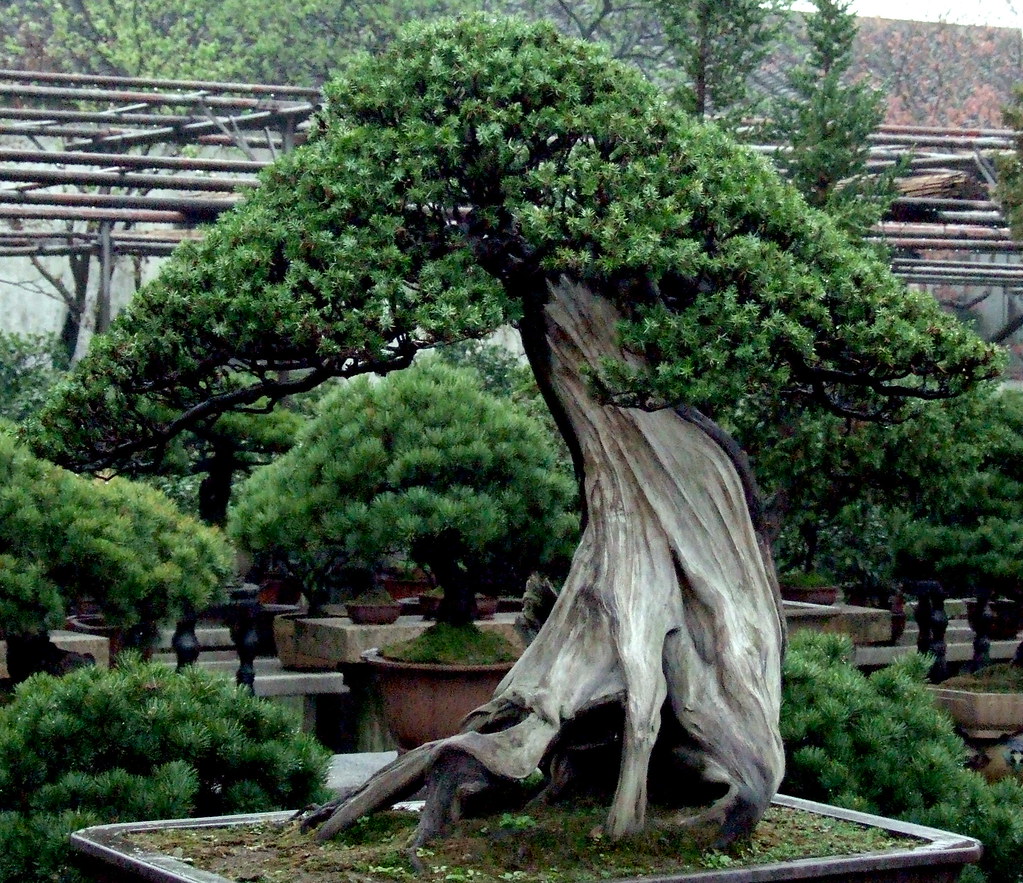
Bonsai tree is a culture of art practiced for thousands of years. Species wise they can live up to 50 and 100 to even 1000+ years with proper care and maintenance.
Bonsai culture is so popular now that it has become a measurement of someone’s classic taste. It can last your life, your children’s and your grandchildren’s lives, and even more generations. Crazy life span in a miniature plant, right? So here the question is, why do they live so long?
Here we’ll dive deep into this question and which factor works behind age longevity.
- Biological reasons
- Depending on species
- With proper care
Biological reasons
Bonsai trees typically have less nutrition and opportunities are given compared to when they would grow in full form and strength, making their growth a lot slower near zero. This intentional slow-growth technique is actualized by pruning, root management, and maintaining the required conditions. Slow growth can lead to a longer lifespan.
Some tree species naturally have longer lifespans. These species genetically have a longer life which makes them more suitable for a bonsai. It is proven that these long-life species can give a longer life for a bonsai nearly their normal lifespan or even more if maintained properly they are mostly chosen for a bonsai.
Over some time, bonsai trees adapt to the specific conditions in which they grow. Adaptation makes a tree more drought-resilient, leading to a healthy life for a bonsai. A healthy life means a longer life, which is another main reason for a bonsai to live longer.
Bonsai trees have to tolerate a lot of stress through techniques like root and leaf pruning and wiring. This ability to withstand the pressure can trigger the defensive mechanism of the tree which actually can help the tree live longer by becoming more resilient to drought and a healthy immune tree.
Most of the trees go through a dormancy period in winter some go in summer. They don’t produce any flowers and fruits in this period and the growth becomes very slow. In the dormancy period, they store energy and resources which contributes to a longer life. As bonsai is the mimic of a big tree it goes through the same process too.
The controlled environment can delay the aging characteristics associated with old age such as changes in leaf color, bark thickening, and leaf size reduction which helps the tree to give a longer appearance.
Depending on species
The longevity of a bonsai tree significantly depends on the mother species. The longer the mother tree will live there is a high chance the bonsai will live longer too. It is because they have the genetic predisposition to live an extended period.
For example, we can see that Japanese maple (Acer palmatum), Jade (Broadleaf Evergreen), and Fukien tea (Broadleaf Evergreen) have over one hundred years of lifespan which is considered a long-lived species. Redwoods (Pines and Conifers), Juniper (Pines and Conifers), and Pine (Pines and Conifers) have a very long life of five hundred to three thousand years. On the other hand, Ficus (Broadleaf Evergreen), Azalea (Broadleaf Evergreen), and Weeping willow (Deciduous) can live ten to fifty years which is considered a short-lived species for a bonsai.
Some species can tolerate more hardiness and some are more resilient to environmental drought, stressors, diseases, and pests. Their natural survival characteristics allow them to thrive and endure for many years in the confined environment of a bonsai container. Species like Chinese elm (Ulmus parvifolia) and junipers (Juniperus spp.) are known for their hardiness characteristic.
Some species can cope more with pruning and wiring and have the ability to adaption to the constraints of bonsai cultivation. This adaptability helps them to trigger the cell to keep youngness always. Species like Ficus have more adaptability than other trees in bonsai form.
Species with striking and attractive bark characteristics, such as peeling or flaking bark, can attract attention as they age. This can make them desirable and aesthetic to bonsai enthusiasts, and they tend to be well cared for and demanding, resulting in long lifespans. Species like Chinese quince (Pseudocydonia sinensis) are known for their exfoliating bark among bonsai enthusiasts.
Some species yield smaller leaves in smaller forms which is eye-pleasing. Though being a bonsai some species produce dense and branched roots. These factors contribute to extending their ages. Species like Trident maple (Acer buergerianum), Japanese black pine (Pinus thunbergii), and Japanese white pine (Pinus parviflora) are known for smaller leaves and dense roots.
With proper care
The Bonsai aging factor does not only depend on species, it is easy to choose a longer-lived species. But it won’t survive longer if it doesn’t get proper attention which plays an important role in longevity. Caring and maintaining requires years of experience and a combination of horticultural practice. Some general guidelines are given below.
- Pruning: Pruning must be done properly with a sharp and clean tool to stop excessive growth, particularly in spring and summer.
- Wiring: This method is used to shape the stems as you like. Don’t keep wire for too long, it will end up scarring your tree.
- Light: Bonsai needs enough light to survive. Minimum 4 to 8 hours in direct sunlight, depending on the species. Some will do well in indirect and filtered sunlight. Keep rotating the tree following the sun. If you can’t manage direct sunlight use grow light.
- Watering: Proper watering is crucial for a bonsai tree. Water when the soil totally dries out. Be careful about overwatering and underwatering. Both can cause trouble and eventually death. Don’t let water to stuck in the pot.
- Soil: Use well-draining soil especially made for a bonsai which holds enough moisture for the plant and provides an aeration system to the roots. Don’t choose garden soil as it tends to compact in a bonsai pot.
- Fertilization: Use a balanced, slow-release fertilizer or diluted liquid bonsai fertilizer. Fertile every 2 to 4 weeks depending on the species. Do it regularly in the growing period and stop in the dormant period.
- Repot when it needs a big pot and change the soil every 1 to 3 years. Use insecticidal soap to keep safe from pests or pruning affected branches for diseases. Protect from cold temperatures in winter. To know more…
